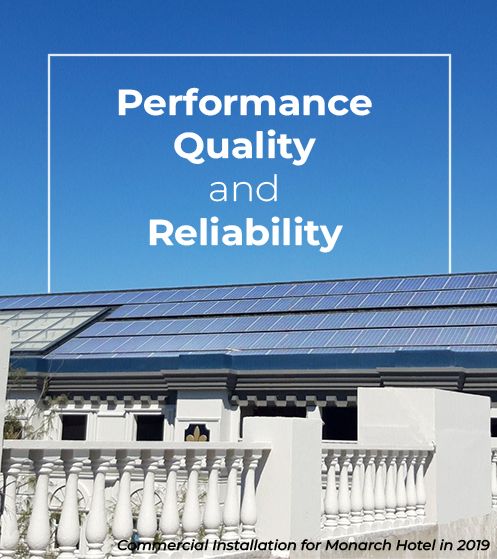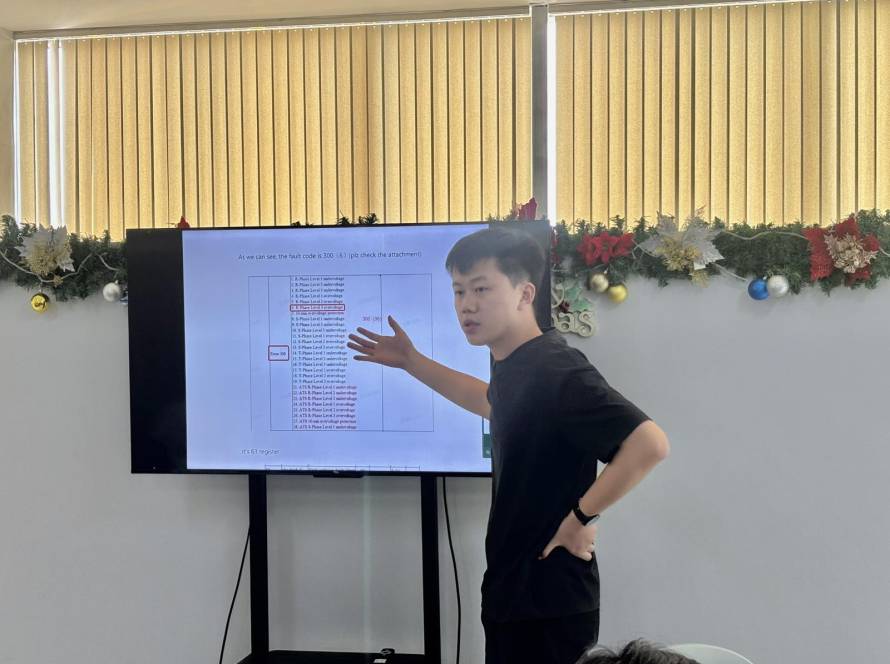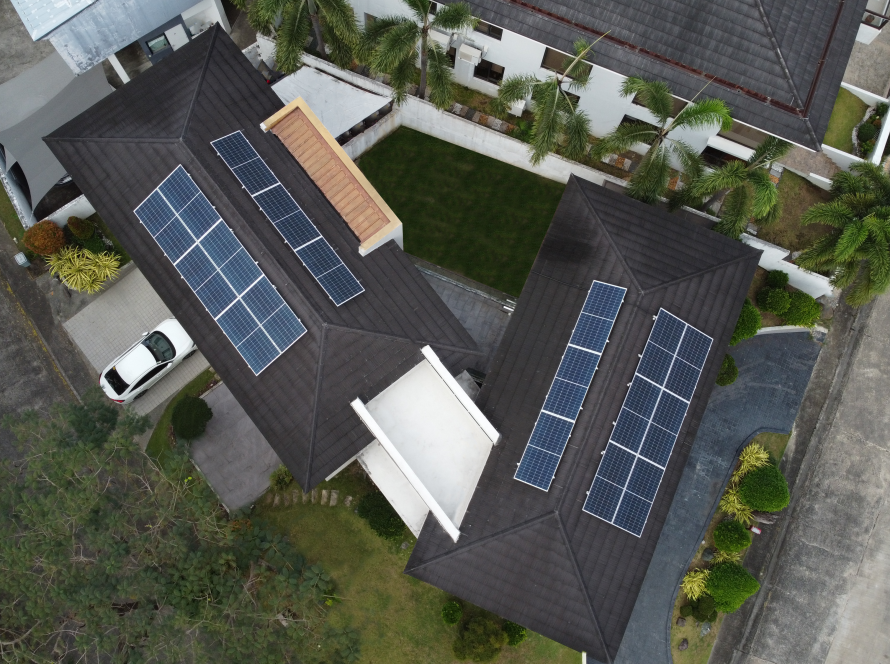Multiple factors affect the productive lifespan of a solar inverter. the solar energy systems’ lifespan is between 25-30 years. But the lifespan of a solar inverter does not last that long. Most inverters last between 10-15 years. solar inverters last up to 25 years, depending on many factors.
Most string inverters have a 10- to 15-year estimated lifetime,
Certain microinverters and DC optimizers have a 20- to 25-year predicted lifetime. Off-grid cell-based PV inverters, have a much shorter life duration, ranging from 2 to 10 years depending on the manufacturer.
Residential solar systems can last up to 30 years in total. As a result, you’ll almost certainly run into a worn inverter at some point during your setup and will need to replace it.

String Inverter – 10 Years
String inverter is the most frequent type of solar inverter, inexpensive and popular. Most of the string inverters are installed in a common room, mounted on the wall. This facilitates the ease of maintenance, as one does not have to go back and forth to the field for troubleshooting. This is a serious benefit in places with extremely cold or hot climates.
They do not endure as long as other inverters. String inverters should last roughly ten years. So we recommend setting aside money every ten years to replace your string inverter.
Micro Inverter – 15 To 25 Years
Micro inverter is a relatively expensive solar inverter that has numerous advantages. Lower operational costs, a longer life span (15-25 years).
Microinverters are new type of inverter that can be attached to or on individual solar panels behind the railing at the array area; Because the microinverter is joined to an individual solar panel, the panel can function independently to convert DC power to AC instantly.
Hybrid Solar Inverter– 15 Years
A Hybrid inverter is an intelligent inverter that enables the storage of excess solar energy in a battery system for self-use. Hybrid inverters function like a common grid-tie solar inverter but can generally operate in one of several different modes depending on the application, this includes battery backup mode which provides a limited level of backup power in the event of a blackout. Most hybrid inverters can also operate without a battery and function just like a grid-tie solar inverter by exporting excess solar energy to the utility grid.
Grid Inverter-15 Years
Grid-tied inverters are designed to be linked to your home’s main power supply to supplement it. When solar energy is available, the system feeds it to your appliances. When there isn’t enough energy to go around, the system reverts to grid power.Grid-tied inverters work with the power source to deliver as much energy as possible. Their intelligent design knows when power is being provided and when it is not and synchronizes power delivery with grid power.
Grid-Tied Solar inverter systems save more money because they do not require batteries and other equipment. And can sell excess power to utilities for additional revenue Lower installation costs, no maintenance or replacement, higher efficiency Net metering allows the power generated by the solar system to offset the energy used from the grid at night or on cloudy days. And can obtain backup power from the utility grid to prevent sudden power outages
Off Grid Solar Inverters-15 Years
Off-grid inverter is off the grid, meaning that it works alone and cannot work with the grid.The off-grid solar inverter draws energy from the battery, transforms it from DC to AC, and then outputs it as AC.
off-grid solar systems completely independent of the grid and can install in locations where access to the utility grid is not possible. In some distant places, off-grid solar systems may be less expensive than extending power lines. Off-grid solar systems are energy self-sufficient, and power outages on the utility grid will not affect them.

Numerous Conditions Can Cause Your Solar Inverter Lifespan To Be Shortened Unintentionally.
1.Solar power inverter overheating
The temperature within the inverter is the most crucial element affecting its lifespan. Several internal electrical components in solar inverters are vulnerable to temperature fluctuations. As a result, putting your solar power inverter without ventilation or in direct sunlight might soon cause it to overheat. These conditions can damage the solar inverter’s components and limit its overall life if they persist for an extended time. As a result, the location of your solar inverter is crucial.
Excessive temperatures might degrade the modules’ performance and lifespan. According to studies, the life of a capacitor is reduced by 50% for every 10 degree increase in temperature. A solar inverter is a piece of heat-generating equipment with power modules, inductors, switches, and connections. Should release This heat throughout time rather than being held in a small region. Otherwise, the temperature will continue to rise.
During the installation process, in order to ensure that the internal temperature of the inverter remains stable. We should pay special attention to the following issues.
- Install the solar inverter in a well-ventilated area with good outside ventilation. If the inverters for solar are installed indoors, the available site must be at least 10 times the size of the inverter. Should install Exhaust fans and other relevant equipment. Air conditioning can be installed if possible.
- Keep out of direct sunlight. If the solar inverter is to be installed outside, it should be placed against a wall or under the frame to protect the roof or module from direct sunlight.
- Install the solar inverter as far from hot regions as possible, such as boilers, electric furnaces, heat pipes, and exterior air conditioner vents.

2. Input voltage and current of solar inverter
If the input voltage and current characteristics are not properly matched, the life of the inverter will be shortened. For example, some ranges are 200-1000 V. This means that the inverter can work normally if the input voltage is within this range. The input voltage also affects the life of the solar inverter. When the power of the components is fixed, the voltage of the series components should not be too high or too low. It is best to ensure that the series element voltage is close to the rated voltage of the inverter..
3.External environment
Creating a good external environment for the solar inverter is also very important. Although the inverters for solar can reach IP65 outdoor protection conditions, which can be dustproof, rainproof, and fog proof, the service life in a clean environment is longer than that in a dirty environment.
If the external environment is heavily polluted or dusty, it is recommended that the inverter be installed in an enclosed space. When dust falls on the heat sink, it will affect the heat dissipation function. In addition, if dust, leaves, and sand enter the air duct of the inverter, it will also affect the heat dissipation function.
4. Installation of solar power inverters
Creating a good external environment for the solar inverter is also very important. Although the inverters for solar can reach IP65 outdoor protection conditions, which can be dustproof, rainproof, and fog proof, the service life in a clean environment is longer than that in a dirty environment.
If the external environment is heavily polluted or dusty, it is recommended that the inverter be installed in an enclosed space. When dust falls on the heat sink, it will affect the heat dissipation function. In addition, if dust, leaves, and sand enter the air duct of the inverter, it will also affect the heat dissipation function.
5. Cleaning and maintenance
Creating a good external environment for the solar inverter is also very important. Although the inverters for solar can reach IP65 outdoor protection conditions, which can be dustproof, rainproof, and fog proof, the service life in a clean environment is longer than that in a dirty environment.
If the external environment is heavily polluted or dusty, it is recommended that the inverter be installed in an enclosed space. When dust falls on the heat sink, it will affect the heat dissipation function. In addition, if dust, leaves, and sand enter the air duct of the inverter, it will also affect the heat dissipation function.

Conclusion
When solar inverters leave the factory, they are all meant to last the same amount of time. However, factors such as installation, operation, and maintenance can have a significant impact on the actual service life. We must consider these contributing elements and take suitable measures in order to increase the life of the inverter.
Source: https://www.growattenergy.com/how-long-do-solar-inverters-last-2/

Questions?
Inquire Now
FILL UP THIS FORM TO
REQUEST A FREE QUOTATION!
Take the first step towards a greener future by sending us your inquiry for your solar energy solutions.
Kindly complete all the required fields marked with (*) asterisks.


